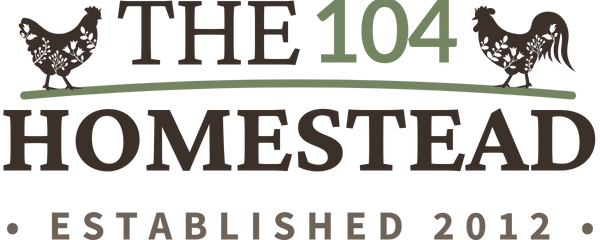Easily Fix Spraddle Leg/Splayed Legs with a Drinking Glass
Spraddle leg/splayed legs are a common problem in chicks that can be easily cured if caught early. Learn how I do it with a drinking glass.
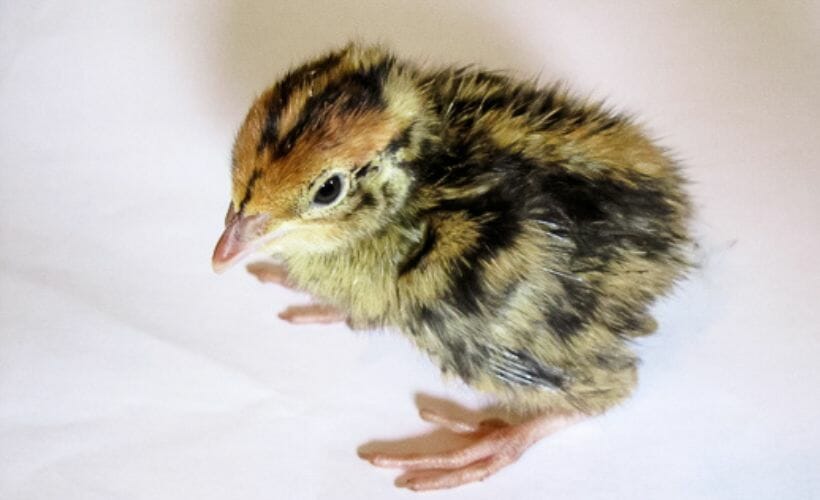
Today, I will share an inventive and effective solution for treating spraddle leg or splay leg in chicks. In addition to discussing the treatment method for spraddle leg, I will also delve into the prevention of splayed legs during incubation and brooding, as well as touch upon the related issue of curled toes in baby chicks. With valuable insights on preventive measures, traditional treatments, and more, you’ll gain a comprehensive understanding of how to support your chicks’ leg health from the early stages of their lives.
What is Spraddle or Splay Leg?
Spraddle leg, also called splay leg, is a condition where a newly hatched chick’s legs “splay” out to the sides. One or both legs may be affected. Often, it occurs from brooding chicks on a slippery surface such as a newspaper. Other causes include incubator temperature issues (if a large number of chicks are affected at hatch, this is most likely the cause), vitamin deficiency, or being in a poor position in the egg. All poultry are at risk for spraddle leg.
What is the Cause of Spraddle Leg?
A weakness or injury in the tendons of the feet and legs causes splay leg/spraddle leg. The most common cause is a brooder floor that is too slippery, and the baby chick’s legs slip, causing tendon injury in the legs. It could be caused by incubation issues as well. Read on!
Preventing Splayed Legs in the Incubator
We talk a lot about traction when it comes to preventing spraddle leg, but heat is the biggest thing when it comes to preventing the condition while the chick is in the brooder. Chicks that are exposed to elevated incubation temperatures may have lower muscular strength to stand up when they hatch. Overheated chicks that hatch will be lethargic and may appear exhausted, slow to search for feed and water, and potentially become starved within the first week of life.
Make sure you are incubating at the proper temperatures for the eggs you’re hatching. First, be sure your temperature and humidity gauges are accurate. I have a digital Brinsea Hovabator, but I also use an IncuTherm Plus Digital Thermometer/Hygrometer to compare. Second, make sure your incubator has maintained a steady temperature for at least 48 hours before setting your eggs.
Traction in the incubator is also a concern, so when I remove the egg turner at lockdown, I also put some Gorilla Grip Drawer and Shelf Liner on the incubator tray. It gives the chicks traction when they’re running about, and it also seems to keep eggs from getting knocked all around by the early hatchers.
Preventing Splayed Legs in the Brooder
I am a huge advocate of brooding chicks and other poultry on sand bedding. It is easy to clean, provides traction, stays dry, and absorbs heat from our brooder heater so the chicks can stay warm more easily.
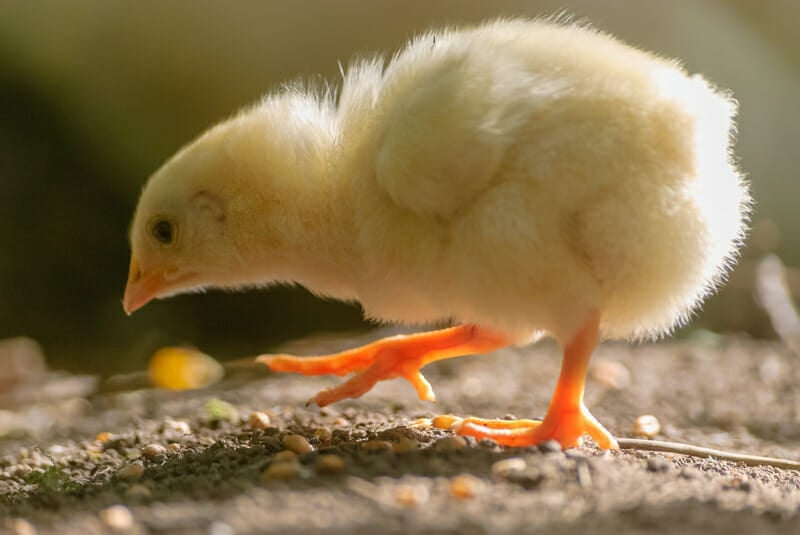
Because sand can cause impaction in tiny chicks, it is wise to wait for two or three days after hatching before using it. I lay paper towels over it for the first few days. Once it seems like the chicks have figured things out, I’ll remove the paper towels. This will give the chicks time to figure out what and where food is.
Brooder flooring to avoid includes newspaper and cardboard. Both of these provide a slick surface that frequently leads to leg injuries of all sorts.
How is Spraddle Leg Traditionally Treated?
If you search for solutions to spraddle legs on poultry forums, you will see suggestions for securing the legs in place using bandaids, medical tape, rubber bands, or string. Chicken Chick likes to use VetRap for easy application and removal. The idea is to brace the legs to strengthen them in the proper position. Spraddle leg can usually be fixed with no long-term effects as long as it’s dealt with early.
How to Treat Spraddle Leg/Splayed Legs in Chicks with a Drinking Glass
We just wrapped up a hatch of quail. These little dudes are about the size of a half dollar when they break free of their eggs. The hatch occurred over the course of three days, with the last one coming almost a full 24 hours after everyone else. This last one was having a lot of trouble finding its feet and frequently tipped over onto its back or side. It had most likely outgrown the eggshell since quail grow at such an astounding rate.
Since it was so tiny, using traditional methods for splayed legs wouldn’t work. Trying to attach anything to legs the size of toothpicks would have resulted in more harm than good.
Set Up Your Drinking Glass
Instead, I pulled out a pint glass from the dry bar. This trick I’m about to tell you about will work with all young poultry, but you will have to tailor your drinking glass to the size of your bird.
First, stuff some paper towels in the very bottom of the glass so it looks like a nest. Then, place your chick with splayed legs inside the glass. Enjoy an hour-long TV show (I watched Stranger Things) while your chick does its Physical Therapy. The chick is nestled into a standing position by the sides of the glass and the paper towel.
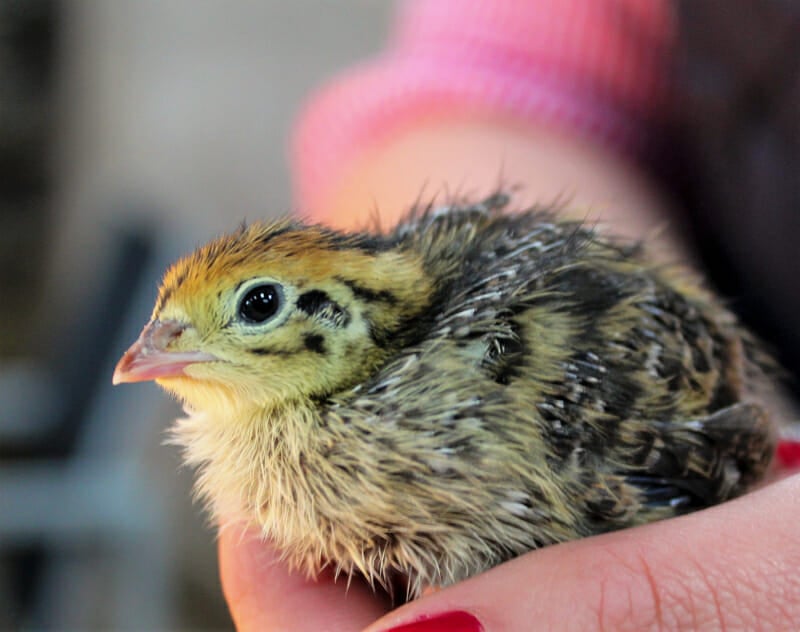
Obviously, the chick will want to pop out of the glass, so it will push and push with its legs to get over the edge. This strengthens the legs while they are in the proper position.
How Long Does Chick Therapy Take
In severe cases, repairing the damage may take a few “drinking glass physical therapy” sessions. For our little quail chick, one session was all it took. The chick was separated from the other quail for the night because she was smaller and still balancing on her hocks. The next day, she was ready to join the group. The only indicator now as to which quail chick it was is that the affected chick is smaller than the others.
How Long Does it Take to Treat Spraddle Leg?
If you’ve chosen the bracing method, remove the brace and check your chick’s progress once or twice daily. You should see results in one or two days. It shouldn’t take more than a week for the bones to harden in the proper position.
If you’ve chosen the drinking glass method, do two or three sessions a day, and you should see improvement immediately.
Additional Care for Chicks with Splayed Legs
Make sure you are paying close attention to any chicks affected by spraddle legs. Keeping them separate from other chicks may be necessary so they do not get trampled or picked on. It also helps in monitoring their food and water intake. Chicks with splayed legs often cannot access water and food independently and risk drowning in water.
Although chicks can survive without food for the first few days of life, water is essential in their recovery and overall health. Electrolytes should be added to the water of any chick that is having a rough time after being moved from the incubator. Your chick(s) may also benefit from Nutri-Drench, a natural high-energy source containing vitamins, minerals, amino acids, and glucose. If you incubate your own chicks or order day-old chicks online, it’s wise to have electrolytes and Nutri-Drench in your arsenal, just in case.
Curled Toes in Baby Chicks: Prevention and Treatment
While ducks don’t really have “toes,” I want to make note that what follows applies to ducklings as well. In fact, curled “toes” seem to be more common in ducklings than any other type of poultry.
Preventing Curled Toes
Curled toes happen much the same way that splayed legs do. If it’s happening at the hatch or directly after, it was probably caused by a genetic issue, incorrect incubation temperatures/humidity, or a difficult hatch.
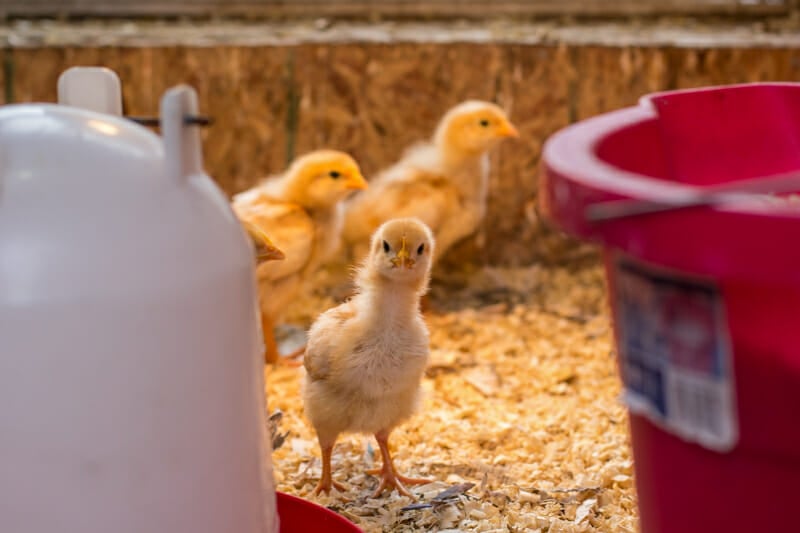
There’s not much you can do about genetic issues beyond making sure you’re incubating eggs from healthy hens. To give the best odds, make sure you have your temperature and humidity well calibrated before setting your eggs, and make sure your tray isn’t slippery — I like to use Gorilla Grip Drawer and Shelf Liner.
If curled toes appear after hatching and when the chick is in the brooder, it’s most likely a nutritional or management issue. Make sure that your brooder is properly sized for the number of chicks you are brooding and that the surface is not slick — we use sand and top it with paper towels for the first couple of days. Also, make sure that you are feeding the proper feed for your chick species. Chicks, keets, ducklings, and poults all have different nutritional requirements.
Treatment of Curled Toes
The best treatment for curled toes is tiny little bracing sandals for those little feet. Because these “shoes” (usually made with bandaids) will slow your chick down, they need to be separated from the other chicks during treatment.
Frequently Asked Questions
If you’re hatching a fair amount or regularly bringing home day-old chicks, you’ll likely come across splayed legs or curled toes. Thankfully, you’re now equipped to deal with it.
For more hatching information, check out Lockdown & Brooder Setup, Hatch Day: Hatching Process & Losses, How to Get a 60% Hatch Rate with Duck Eggs, and How to Incubate and Brood Coturnix Quail.
If you’ve found value in this blog post and enjoyed reading it, why not share it with your Pinterest community? Pin the image below and spread the love!
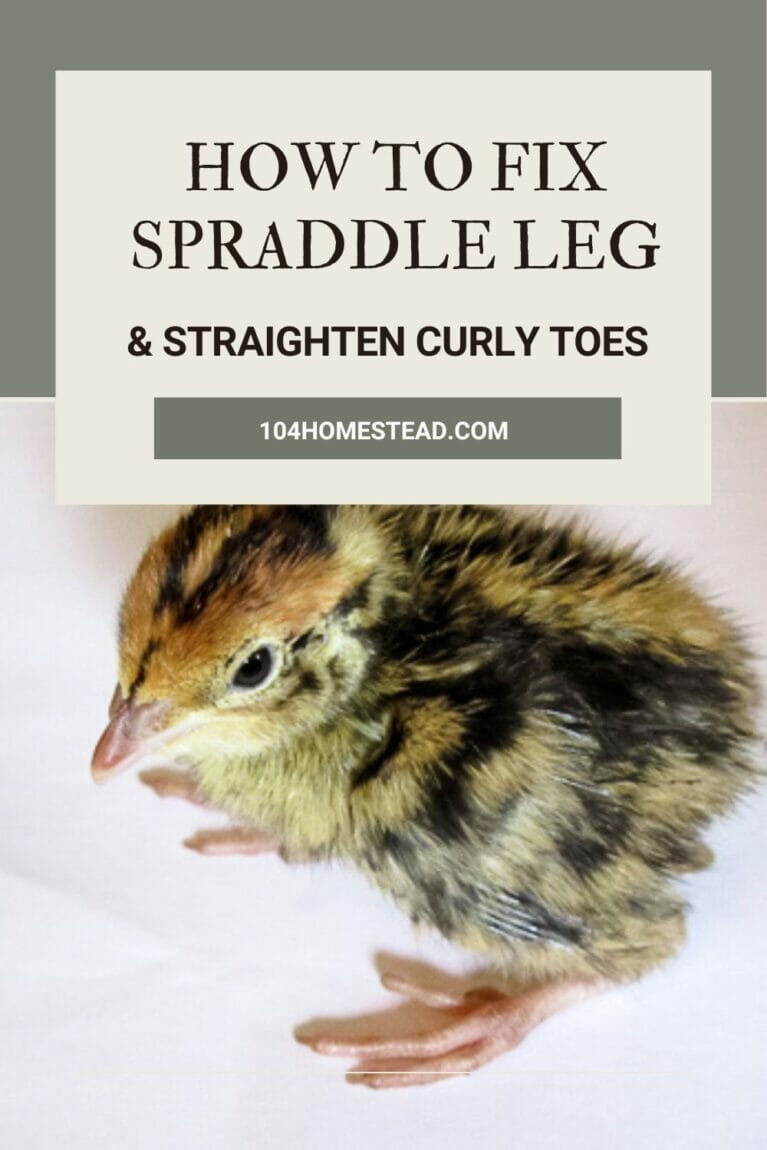
Recognizing and addressing spraddle leg or splay leg in chicks is crucial for their overall health and well-being. Using a drinking glass as a creative treatment method, coupled with proper incubation and brooding practices, you can effectively tackle these leg conditions and set your chicks on the path to a strong and active life. Early intervention and proactive care are key to nurturing healthy and thriving poultry.
Have you ever encountered spraddle leg or curled toes in your chicks? I would love to hear your experiences and insights in the comments below!
